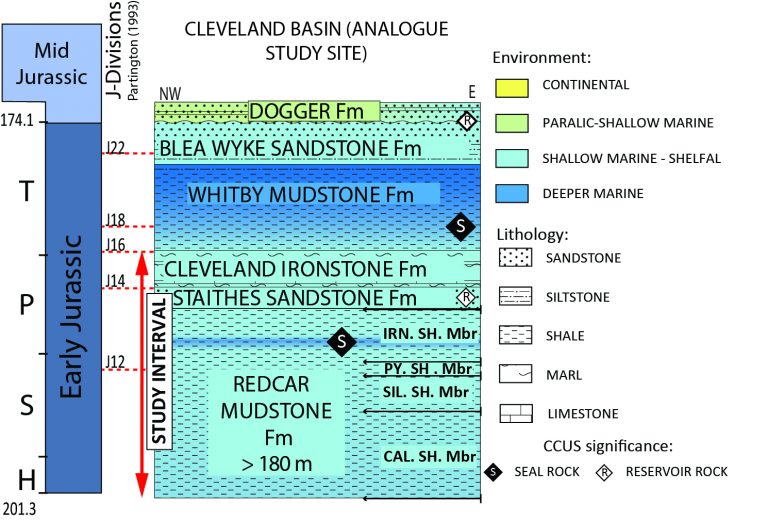Mudrock Seals in CO2 Storage Systems Thematic Research
From an operational and regulatory perspective, the success of geological carbon storage depends on the assurance of long-term containment of injected carbon dioxide (CO2) within the storage complex at depth. Critical to this is the assessment of the sealing potential of the cap rock, as well as its potential for secondary storage. However, mudrock seals are frequently evaluated as homogeneous media of variable thickness with assessments commonly based on sub-cm3 analysis of cuttings supplemented by modelling. Additionally, mudrock interactions with free phase CO2 are comparatively understudied. Consequently, the potential impact of sub-seismic scale heterogeneity in mudrocks on sealing capacity and the reactivity/adsorption of free phase CO2 at and along reservoir-to-seal margins requires better constraint.
To address this issue, CASP has developed a programme of phased research utilising well-exposed outcrops and newly available borehole/core data to build a mudrock seal analogue model that approaches the scale of subsurface targets. While this research is intended to form a robust analogue with wide application, the studied stratigraphy is directly analogous to incipient subsurface storage systems in the North Sea.

The initial phase of research focusses on the Early Jurassic Redcar Mudstone Formation (>180 m thick) and its overlying/underlying contacts (Fig. 1), which are best exposed at Robin Hood’s Bay in the Cleveland Basin. The formation is subdivided into four members based on observed compositional differences that are well characterised by detailed biostratigraphic and lithostratigraphic frameworks. CASP’s thematic research projects will integrate multiscale and multi-proxy datasets to characterise compositional heterogeneities in detail, examine the interaction of deformation and composition and evaluate the impact of their interplay on seal potential. The first phase of research will initiate with two projects:
Contact(s): Stephen Vincent
Products
- Geological Carbon Storage Research
- Mudrock Seals in CO2 Storage Systems Thematic Research
- Bunter Sandstone Storage Complex Thematic Research
- A palynozonation of the Bunter Sandstone CO2 storage complex: onshore analogue study (CASP.BSSC.1)
- Palynostratigraphy of the Bunter Sandstone CO2 storage complex in the Southern North Sea (CASP.BSSC.2)
- Cyclostratigraphy of the Early to Middle Triassic of the Southern North Sea (CASP.BSSC.3)
- Reservoir composition and diagenesis (CASP.BSSC.4)
- Controls on Bunter Sandstone composition (CASP.BSSC.5)
- Middle Triassic seals – onshore analogue study (CASP.BSSC.6)
- Middle Triassic seals – UK and Dutch offshore wells study (CASP.BSSC.7)
- Reactions and Flow of CO2 Fluid in Compositionally Immature Sandstones Thematic Research
- The Impact of Volcaniclastic Rocks on CO2 Storage Thematic Research
- Regional Research
- Reports
- Project History
- Data Packages
- Geological Collections and Data
